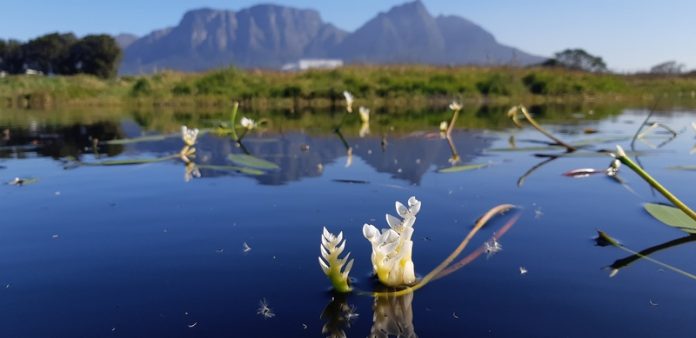
Every Spring brings forth an explosion of annuals and perennials which germinate in the wet soil as the weather warms up.
Many residents and visitors to the areas where the flowers occur contend that they should be left untouched and not mowed until the seeds have ripened and dropped.
Some of these are remnants of indigenous fynbos, renosterbos and strandveld, which can transform open spaces into Namaqualand-type flower shows.
Other vegetation making their appearance include weed grasses such as common wild oats and broadleaf weeds such as Patterson’s curse. These weeds quickly push their flower heads upwards and reach 1,5 metres high, even within a matter of days after being mowed.
‘Mowing causes contention as residents on either side of the hedge flood us with numerous requests for parks to be both mowed and left to flower,’ said the City of Cape Town’s Mayoral Committee Member for Community Services and Health, Councillor Zahid Badroodien.
The City has more than 6 461 hectares of land to be mowed, which is no small task.
‘There are many open areas throughout the city, including identified biodiversity areas or nature sensitive areas, where mowing does not take place. Despite these challenges, all efforts are being made to keep our parks and sidewalks tidy and properly maintained, while at the same time, satisfying the nature lovers and those keen on the new Spring buds.
‘Taking measures to preserve Nature Protected Areas means we continue to have habitats where local flora can flourish. This in turn attracts a variety of butterflies, birds and insects which are crucial for many reasons, including pollinating wild flowers to produce viable seeds, thus safeguarding the species for future generations to enjoy. It’s also a special privilege to live in a part of the world where one can walk outside at this time of year and see wild flowers everywhere. We encourage communities to notice them and learn about how to protect them. Many are very rare, critically endangered species, and can only be seen in the Cape during a few short months of each year,’ said Councillor Badroodien.
Some examples of parks where mowing does not take place are:
Surrey Park, Claremont
After being mowed for many years, this park lost much of its indigenous vegetation. A few years ago, the mowing schedule was adjusted and the park was left to flourish during spring. Today, remnants of the critically endangered Cape Flats Sand Fynbos can be seen re-emerging including numerous bulbs and daisies. Mowing doesn’t take place from August – December, and a fence has been erected to protect the biodiversity area.
Panorama/Benurban Road/Valmary Park (public open space), Durbanville
The indigenous Baeometra uniflora (Beetle Lily), is part of the bulbs and shrubs found in this Public Open Space. Remnants of the critically endangered Swartland Shale Renosterveld are found at this site and numerous bulbs and flowers appear from August – October when mowing doesn’t take place
Rondebosch East Common Conservation Area, Rondebosch East
The Rondebosch East Common Conservation Area is a popular recreational space for various users from nature lovers and runners to dog walkers. It is also one of the most important conservation areas for wildlife and biodiversity within Cape Town’s Southern Suburbs. The site conserves the critically endangered Cape Flats Sand Fynbos (less than 1% is formally protected).
Residents are also encouraged to be actively involved and submit motivations for areas where the City should suspend grass cutting for nature conservation to [email protected] or approach their local Recreation and Parks Department. It is important to also be able to provide evidence of support from your neighbours in the local community.

